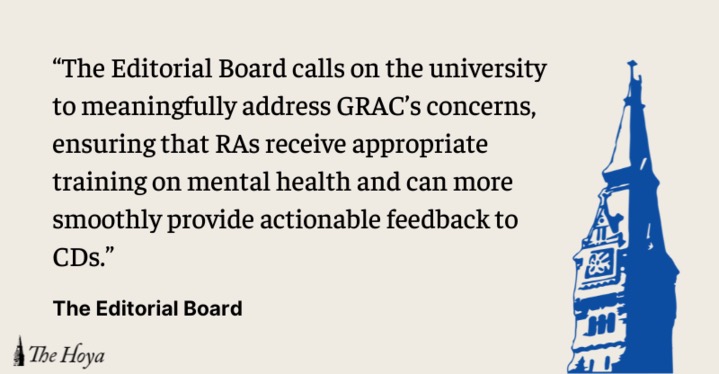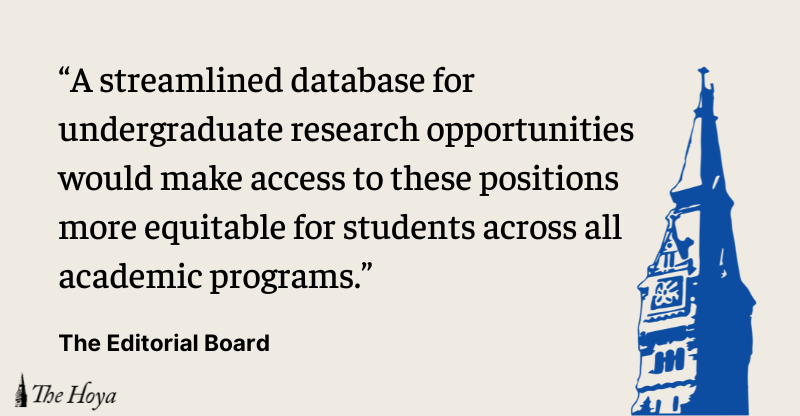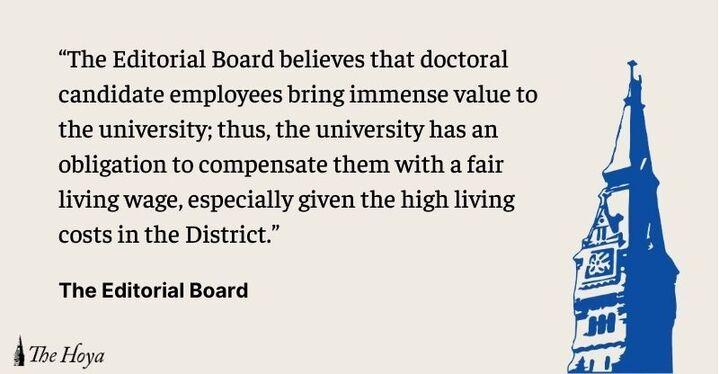This editorial discusses sexual assault on campus. Please refer to the end of the article for on- and off-campus resources.
Last Friday, the Georgetown University S.T.O.P. coalition delivered a petition to the Office of the Provost calling on the university to increase resources for black female survivors of sexual assault. Today — the deadline for a public response as promised by Vice President for Student Affairs Todd Olson — the university should unflinchingly commit to supporting black survivors.
S.T.O.P., a coalition of black women frustrated and disappointed by the lack of diversity in support for survivors, formed in response to a heated debate at a March 13 event discussing masculinity hosted by the Black House.
Among its critical demands, S.T.O.P seeks to hire another black trauma specialist, increase black staff in the Title IX Office and implement bias training for the Georgetown University Police Department.
University support for minorities cannot end at rhetoric that espouses diversity in its mission statement and core values. To protect the safety of its students, the university must recognize the intersection between race and survivorship and provide more resources to aid black survivors.
Georgetown cannot take lightly the crucial need to support survivors: The rate of female undergraduates who reported experiencing nonconsensual sexual contact since entering Georgetown —31 percent —is eight points higher than the average among two dozen peer universities, according to the 2016 Campus Climate Survey.
Though the high number can indicate good reporting, it is still disappointing. Moreover, on a national level, black women are more likely to experience assault than white women, according to research by Women of Color Network.
Despite these dismal statistics, the university has delayed in hiring a Title IX coordinator — 10 months after the previous coordinator left — and failed to address the distinct needs of survivors from minority communities.
Ignorance and exclusion of the experience of people of color is damaging to the safety of black survivors. Negative experiences with police or authorities mean that black women often do not feel comfortable reporting instances of sexual assault, according to the Maryland Coalition Against Sexual Assault.
The university’s failure to diversify support around sexual assault and mental health services only intensifies the barriers that black survivors must overcome to access resources and begin healing.
Currently there are no black Title IX contacts who work with undergraduates, according to the Office of Title IX contact page.
By increasing representation for minority communities in both offices, Georgetown can begin to meet the needs of black students and earn their trust in the Title IX process.
Moreover, increasing implicit bias training and cultural competency training for GUPD is an important step to reduce racist or insensitive actions that would further diminish distrust in law enforcement on campus.
Georgetown should also act according to the petition’s demands to hire another black trauma-informed specialist. The responsibility of supporting every minority community cannot fall solely on Jennifer Wiggins, who is currently the only minority trauma specialist.
Only by hiring an additional black trauma specialist can the university adequately support every black student who requires care and signal that it is concerned with more than a black staff member who checks the box for diversity.
As Georgetown formulates its response to the petition, a vague statement affirming support for survivors cannot be the solution. S.T.O.P has proposed actionable and clear solutions; any delays or hedging by the university ignore the safety of black survivors.
To break barriers preventing women of color from receiving the support they need and deserve, the university must recognize race in survivorship. Georgetown cannot merely use diversity as a buzzword; it must also mitigate the distinct adversities of minority students.
The Hoya’s editorial board is composed of six students and chaired by the opinion editor. Editorials reflect only the beliefs of a majority of the board and are not representative of The Hoya or any individual member of the board.
Resources: On-campus confidential resources include Health Education Services (202-687-8949) and Counseling and Psychiatric Services (202-687-7080); additional off-campus resources include the D.C. Rape Crisis Center (202-333-7273) and the D.C. Forensic Nurse Examiner Washington Hospital Center (844-443-5732). If you or anyone you know would like to receive a sexual assault forensic examination or other medical care — including emergency contraception — call the Network for Victim Recovery of D.C. at 202-742-1727. To report sexual misconduct, you can contact Georgetown’s interim Title IX coordinator at 202-687-9183 or file an online report here. Emergency contraception is available at the CVS located at 1403 Wisconsin Ave NW and through H*yas for Choice. For more information, visit sexualassault.georgetown.edu.














Jay Gruber • Mar 29, 2019 at 4:49 pm
The Georgetown University Police Department should be included as an on-campus resource. The Department has a large cadre of Sexual Assault Response Trained (SART) officers who have extensive training on how to support and guide sexual assault survivors through the myriad resources available to them. Survivors can contact GUPD by calling 202-687-4343 or through the LiveSafe app.